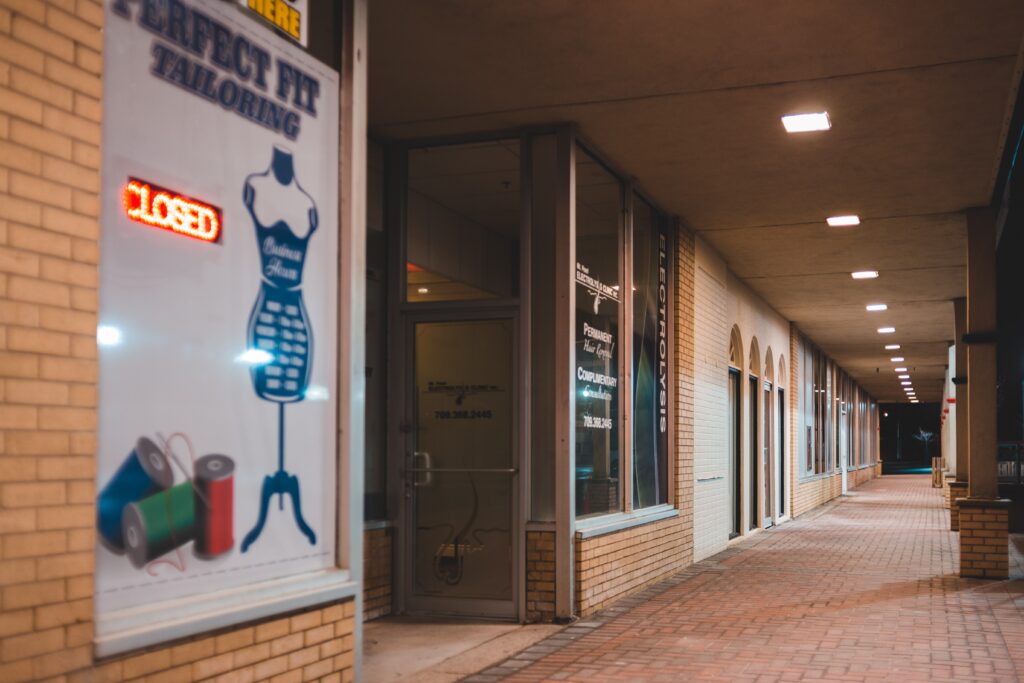Where residential real estate is the behemoth of real estate, commercial occupies a smaller space. Multifamily takes the largest chunk of commercial, leaving a small niche area left. These are retail, hospitality, and industrial areas of investment. There’s a general theory that this kind of investing is just for ‘the big boys’ and many investors shy away, worried they’ll lose their pants.
While you are trying not to lose your pants, let’s take a look at a commercial opportunity I recently evaluated. It’s an absolute NNN deal. This means that there are zero expenses that an investor pays as part of maintaining the property. That leaves just administrative fees, accounting, bookkeeping, LLC fees, mortgage, and legal fees. While these must be considered, they are usually a small percentage (except for debt) of the total income from the property.

What Does NNN Mean?
The ‘N’ stands for net and that is the amount paid for a certain item. Saying “triple net” is the same as writing NNN. No one except weirdos say, “N, N, N”. Don’t be a weirdo, just say “triple net”. All leases have a base rent and then can have additional payments on top of that. These are the ‘nets’.
A single net lease has the tenant paying the property taxes. This isn’t done often because the landlord doesn’t want to find out the tenant failed to pay their tax, a situation where the government is mad at the owner, not the tenant. Better as an owner to pay it yourself and either be reimbursed, or more commonly, have the rent increase to compensate.
A double net lease has the tenant paying property tax and insurance. Again, usually paid by the landlord and then billed to the tenant.
The coveted triple net lease adds maintenance/repairs. These types are great for the landlord, because repairs are difficult to predict. If the tenant pays for all these, then the landlord doesn’t have to worry about what thing will break down. This type of lease often misses big capital expenditures, so a new roof might be paid by the landlord.
An absolute NNN lease has everything covered by the tenant except debt service. If done right, the only risk the landlord assumes is if the tenant breaks the lease agreement. For this reason, underwriting (evaluating) the deal shifts to taking much more time scrutinizing the tenant’s financial situation and much less looking at numbers.
Evaluating the NNN Deal
These types of deals either come by because the landlord already owns the property and is marketing the unit as a NNN deal – something we won’t consider today – or the current owner has an existing NNN lease and a prospective buyer is considering purchasing it.
The deal I’m looking at has a lease attached. Many big companies don’t own much real estate, preferring to rent. Some examples are Walgreens, CVS, 7-Eleven, Dollar General, DaVita, and Aspen Dental. These guys take a lot of time evaluating a potential new site and are good at making sure it works for another location.
Some will build out the property and sell it with the lease attached. These type of deals will typically have a long-term lease, such as 15 years, and have options to extend the lease, possibly in 5-year increments. These options will have rent bumps. The lease is already signed and unlikely to change. The negotiation then shifts to the price of the building.
Because there are no expenses (I’ll assume none for clarity, though there are some as written above) and you know the income from the lease, it’s easy to come up with an NOI for the deal. Cap rates for solid commercial deals might be in the 5-6 range. When interest rates increasing, caps go up as well. Prices should go down.
Because the lease term is so long, the investor needs to look at what happens many years in the future. While, they look attractive, options benefit the tenant, because they can walk away if the location is not profitable for them. The owner that purchases this type of deal wants to set it and forget it and the last thing the owner wants is to negotiate a new lease. These companies know this, and often will negotiate a lower rent than is what in the lease, feeling that they have the owner over a barrel. Because of this, it is very important to have a backup plan in case the tenant leaves. The value of the building is much higher with a good lease, than the value of its sticks and bricks. It may be difficult to sell a building that looks like a Walgreens (but has nothing inside) when there is no lease. Then again, you don’t often see a Walgreens location go out of business.

The investor needs to be willing to hold the property for a long time and not be in a hurry to sell right away. These aren’t good properties to flip.
Once the investor knows what the NOI and going cap rate is, they can calculate a reasonable purchase price. With that, they can determine the debt service and then calculate a cash flow and have a reasonable certainty the rent checks will come in.
These properties will be held for many years, so an IRR calculation is a good thing to do. IRRs will likely be lower for this type of deal, as a sale will happen many years in the future, where the value of a dollar will be less. The investor is wise to take some time to look at the location where the property is to determine the investor’s level of risk. Is there going to be competition for the tenant? Is the town very small and if the tenant leaves, there would be a huge loss in property value (because the lease is gone)? Does the tenant have a poor creditworthiness? If any of these are true, then the IRR will need to be higher for the investor to take a risk.
My deal has $90k for income each year for 15 years and no expenses, which means that the NOI is the same for 15 years. Each 5 year period has an option to renew and increases the rent by 10%. The possible lifespan of this lease is 40 years! I’ll need to consider my own lifespan and whether I want to own this when I’m 80. If I take on partners, I’ll have to do the same calculation for them. We will need to consider how we will exit the deal.
In today’s market, 6.5% is typical for a commercial loan. I can get one amortized over 30 years with a 5 year term. If I pay a 6% cap for this property, it’ll cost $1.4M and that’ll cost me $87k in debt service, leaving a pitifully low cash flow of $3k. That’s doesn’t mean the deal is terrible – it’ll be paying down debt and the rent will be increasing after year 15. The tenant will still be paying long after the mortgage is paid off. The IRR is around 7% depending on when sold. But, there is risk, as stated above. I’ll need to pay less for this property to make it work. For this property’s area and the tenant, I’d like an IRR around 9%. I’ll let you know if we make a deal.

